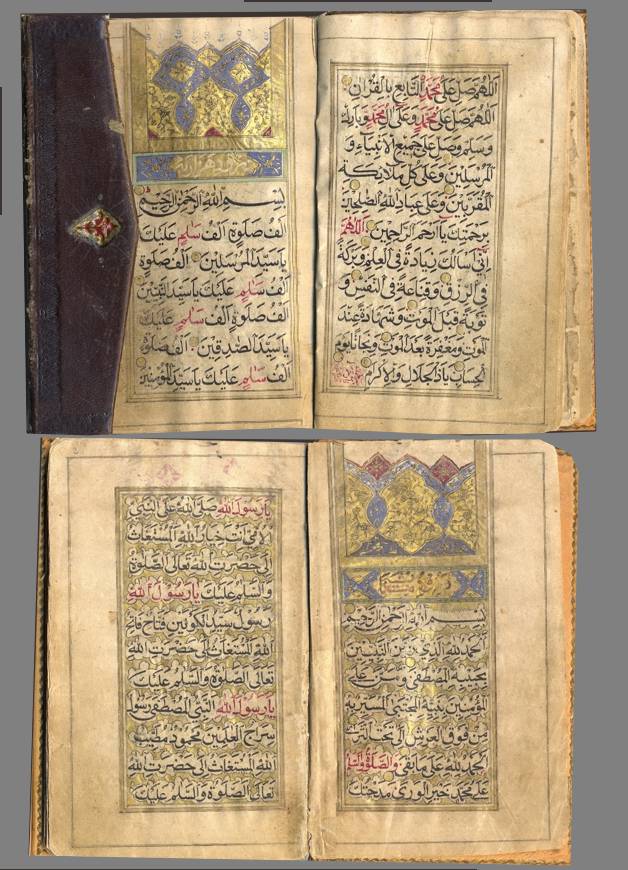A109) Prayer Book entitled Dorud-e Mostagat
Illuminated Arabic complete manuscript on paper, likely of Northern
Indian provenance, to be dated at the end of 17th or beginning of
18th century.
Leaf dimensions: mm. 132 x 80 ca., text panel dimensions: mm. 98 x
50 ca. Handwritten text in black-inked nas? calligraphy on a 17-line
single column; keywords and technical terms marked with red ink
throughout the book. A section of the manuscript contains the
interlinear translation in Farsi written in red ink with nasta?liq
calligraphy.
Composed of 58 leaves, complete.
On leaf 58r. appears the colophon, mutilated of the last two lines that most probably contained, the name of the scribe and the date. In the three legible lines we find the internal articulations of the manuscript summarized.
The decoration includes four gold and colour illuminated frontispieces (?unvan) and numerous chapter titles in white or gold ink inserted in a 'tabula ansata' decoration.
All pages are bordered by a double frame in black and gold. Among the individual lines of the various poetic-religious sections, the beautiful decorative solution typically Persian known as dandan-e mus (lett.: "mouse teeth") abounds, elsewhere assimilated to golden clouds in the interlinear, designed to emphasize a particularly venerable writing.
Leather binding with blind-tooled flap embellished in gold.
Handsome manuscripts apart from traces of use, reinforcements on some leaves, and gap restored in the last page. (ALC 3576)
The Dorud al-Mostagat is an anonymous compilation of North Indian origin, consisting of a set of prayers and pious lists of God's names and attributes, whose intended use is to accompany voluntary prayer, that is, not compulsory (du?a, a term that is entitled four sections out of nine of the entire work), during the dikr, which is the private recitation of religious devotions.
The text is crossed by terms rubricated for emphasis, which convey all the emotion of Sunni Islamic prayer, as well as the mental attitude of the Imitatio Prophetae so typical of the most devout Muslims: Mu?ammad (Islam's Prophet); 'ilahi ('Divine', 'concerning Allah'); 'allahum(ma) (adverb of invocation), and so on. The last section has to do with the practice of nawd, that is the rhythmic movement of the head during the litany of dikr: the pertaining text is in fact a list of invocations of the Names of God, performed in a manner very similar to that of Jewish prayers.





